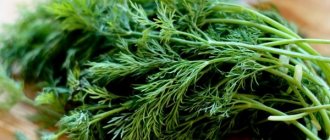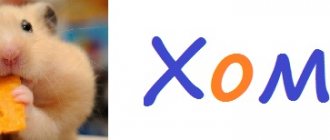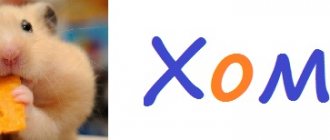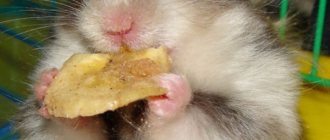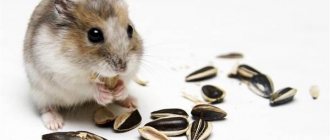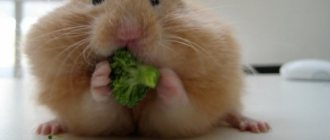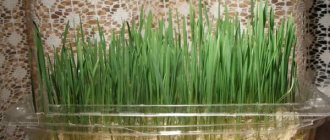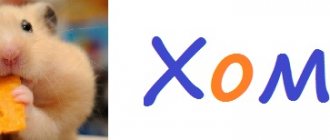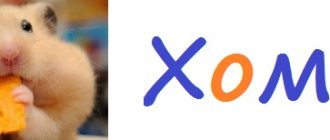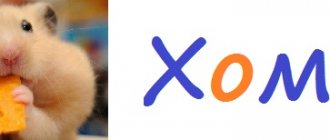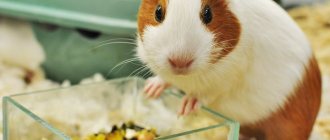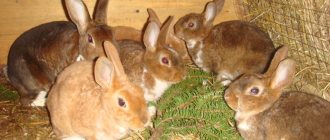- home
- Nutrition
23.03.2018
Hamsters are common rodents and in nature they eat whatever they can find. If in nature an animal finds food on its own, then in captivity it is completely dependent on the owner. Therefore, owners often have a question: what to feed their pet, whether hamsters can eat peas, beans and corn. Let's figure it out in order.
The animal's main diet is a grain mixture of cereals, legumes, nuts, vitamin supplements and other products. You can buy this food at a pet store. Feeds vary in composition and quality. Sometimes an animal refuses to eat food from a certain brand, then you need to change it.
Peas in a hamster's diet
Often, hamster owners do not include peas in their diet, complaining of its negative effects on the digestive system. However, the product is important for diversifying a hamster’s diet, containing many beneficial microelements.
You can give your hamster peas in different ways:
- Boiled. It is recommended to cook peas for elderly pets, or if they have illnesses. It does not take long to cook; 15 minutes of cooking after boiling water is enough to bring it to a soft state. Otherwise, when it is cooked for a long time, vitamins are lost.
- Dry. An alternative to buckwheat, dry peas are also included in the diet, but be careful with young individuals - this can be dangerous for their teeth.
- Fresh. Fresh peas have much more vitamins than dried peas. In addition, your hamster can eat it with the pod, which will supplement the diet with vitamins.
- Soaked. To improve your hamster's digestive system, you can give him soaked peas. You should fill it with warm water for several hours.
The only limitation is that canned peas cannot be given to hamsters, due to the preservatives and spices present in the brine.
Carefully introduce chickpeas into your diet, which contain a large number of trace elements, including phytic acid, which binds calcium, iron, zinc and other trace elements, preventing them from being absorbed, which leads to the risk of osteoporosis and rickets. To prevent the formation of diseases, legumes should be soaked overnight.
Features of feeding
The natural habitat of the Djungarian hamster is semi-deserts and steppes. Therefore, in nature, their main food is various grains and seeds. In summer, vegetables, fruits, herbs and even insects are added to the diet. And the rodents have adapted perfectly to such food. There can be no talk of any overly high-calorie and nutritious food, because it creates additional problems for the animal’s digestive system.
Prone to obesity, Djungarian hamsters do not just quickly begin to gain weight. High-calorie foods lead to diabetes, and because of it, rodents often die. Therefore, in a confined space, it is very important to follow a diet and give your pet the opportunity to move more.
Hamsters have a fast metabolism, so they eat all day long. And your pet should not be allowed to starve, otherwise it will seriously affect his health. Therefore, the owner is obliged to maintain this balance, without overfeeding or leaving the animal for a long time without food. You need to feed your pet 2 times a day.
All food (especially large vegetables and fruits) is cut into small pieces. Otherwise, Djungarian hamsters will instinctively begin to hide food in their house. It is recommended to feed rodents in the evening, as their activity increases at night.
The Djungarian hamster should receive:
- about 65% carbohydrates;
- proteins at least 15−16%;
- and only 5% fat.
The diet must include solid food. To keep the menu balanced, several types of feed are used:
- proteins (eggs, dietary meat, etc.);
- dry food (cereal mixtures);
- greens (dill, parsley, etc.)
New products are introduced gradually and in very small doses. If there is a change in purchased food, it is especially important to accustom the rodent to it within a week. Otherwise, your pet will have an upset stomach, which may cause him to get sick.
You should not give your hamster human food filled with dyes and flavor enhancers.
Old or sick rodents require additional care. They are fed ground food. These are crushed nuts, rolled oats, pureed fruits and vegetables, low-fat dairy products. Be sure to give special vitamins purchased at a veterinary pharmacy and herbs.
Beans
Legumes are often a staple in a hamster's diet, including beans. It can be given in any form, including dry, fresh and thawed. However, it has the best effect on your pet’s health when consumed fresh, as it contains more nutrients.
IMPORTANT! Not all beans are good for your hamster. Red beans (kidni) can only harm him, since their toxicity will lead to deterioration of the animal’s digestion, which is why it should not be consumed.
Green beans are also suitable for consumption. It is most often found frozen, but pets prefer it fresh because of the juice it contains. Before serving defrosted green beans, check its composition; it should not contain any preservatives, which are often added to improve the taste of the product, and additives are dangerous for rodents.
Before giving it to the hamster, it is better to soak the beans, because this way they are better absorbed, giving useful microelements to the rodent’s body. For soaking, one night and water at room temperature is enough.
What to give for grinding teeth
Hamsters have teeth that grow throughout their lives, so they need to grind them down all the time. In their natural habitat, they independently find food that provides this opportunity. But being a pet, hamsters become dependent on humans. Therefore, the owner is obliged to take care of the presence of an animal in the cage:
- Branches of deciduous trees . Djungarian hamsters chew them with pleasure, grinding down their teeth. The branches must be thoroughly washed, then boiled for about an hour, and then dried.
- Hard biscuits for dogs . It is given once a week.
- Mineral stone.
It is strictly forbidden to give branches of coniferous trees. They contain resin, which negatively affects the functioning of internal organs.
If the rodent does not grind down its teeth, they will begin to grow quickly and over time can damage the roof of the mouth.
Corn
To diversify your hamster's diet, you can give him corn. But keep in mind that it cannot be used as preserved food. It is dangerous for hamsters to eat canned corn due to the preservatives contained in the product. Artificial additives and flavors become poison for their body.
ATTENTION! It is better not to give corn to Djungarian hamsters, this is due to their predisposition to obesity and high sugar content.
You can feed your hamster corn in any other form:
- Dry. Dry grains are good for hamsters to eat, but they are reluctant to eat them due to the lack of special taste.
- Fresh. Grains are very useful for a hamster, as they contain 26 elements of the periodic table, which makes it possible to treat many diseases of the animal. They're great for variety, but don't feed them too much as fresh corn contains a lot of natural sugar, which can be harmful to your pet. The cobs and leaves are also suitable for consumption; they contain many vitamins that are beneficial for pets of any age.
- Boiled. Despite the fact that after heat treatment some of the vitamins are lost, it is also possible to give grains to hamsters in this form. To do this, you need to cook them for up to 20 minutes, otherwise they become tough, less tasty and healthy.
- Soaked. It is preferable to feed soaked grains, this way all the beneficial substances and microelements in the product are preserved. In addition, hamsters will eat soaked corn much more readily than dry corn.
- Corn porridge. You can give it to hamsters every day, regardless of age and health status. You need to cook the porridge in water, without adding spices or oil.
Corn is healthy, which is why it is often recommended by veterinarians to treat diseases associated with digestive problems. You can take it as a preventive measure for cancer; for this you need to cook porridge, or mix different types of grains.
Corn sticks, cereal and popcorn
Corn is good for hamsters, but you should be careful with the products made from it, as they are harmful due to the high content of additives.
Because hamsters should not be given any spices, corn sticks and flakes should not be given to rodents. A high content of artificial sugar can lead to the development of diabetes in a rodent, which often results in complications and early death.
Popcorn is included in some foods and can also be prepared at home without the use of additives. However, the store-bought product is dangerous for hamsters due to the content of salt, sugar, preservatives and oil.
Why shouldn't hamsters be given popcorn?
When manufactured in production, fats, sugars, and salt are added to the corn-based product to make the airy delicacy more attractive to the buyer. This is also what makes popcorn harmful to your pet. Djungarian hamsters can develop diabetes from such “goodies.”
If you want, you can pamper the animal with homemade puffed corn without additives. Sometimes it is present in this form in prepared animal feeds. This is convenient because... The contents of the pack are already ready to eat.
Rest assured, the manufacturer has thought through the quantity, nutritional value and safety for you. You just need to look at the daily value on the packaging and feel free to offer the treat to the animal.
What can a dwarf hamster eat?
The delicate stomach of these animals is not suitable for digesting fatty foods and sweets. When thinking about what to feed Djungarian hamsters at home, the easiest way is to focus on what they eat in the natural environment. In the wild, the animals eat a lot of grains and seeds.
In spring and summer, herbs, berries and insects additionally appear in their diet.
The list of what Djungarian hamsters can eat includes three categories of food:
- dry (cereal mixtures);
- juicy (berries, fruits, herbs and vegetables);
- protein (fish, lean meat and eggs).
Ideally, the diet of a Djungarian hamster should include:
- 65% carbohydrates;
- 16% protein;
- 4-5% fat.
Like other rodents, the Djungarian hamster has continuously growing teeth, so in order to wear down its incisors, its diet must be enriched with solid food.
Grain mixtures
Djungarian hamsters can be fed commercially produced dry food. Depending on the brand, they contain different components. Some manufacturers produce simple food for Djungarian hamsters, which includes cereal grains (oats, wheat), grass granules, sunflower seeds and dried fruits.
Others fortify their products with bone meal, brewer's yeast and vitamins.
Important! When choosing a ready-made grain mixture that you plan to feed your dwarf hamster at home, you need to pay attention not only to the shelf life, but also to its composition. The food should not contain raisins, honey granules or candied pineapple.
Fruits and berries
From 14 days of age, Djungarian hamsters can be given moderately sweet fruits. In order not to harm the small rodent, fruits are pitted in advance, since they contain toxic substances. Djungarian hamsters are very fond of apples, apricots, pears, bananas and plums.
Important! Most fruits contain high concentrations of glucose and carbohydrates, an excess of which is harmful to dzungarians. Therefore, juicy fruits can be fed to hamsters in strictly dosed quantities.
It is recommended to periodically introduce seasonal berries into the diet of small pets. Djungarian hamsters eat with appetite currants, rose hips, strawberries, rowan berries, barberries, hawthorns, lingonberries, pitted cherries, raspberries and wild strawberries.
Vegetables
These products contain virtually no glucose. Animals are allowed to eat the following vegetables:
- radish;
- Bell pepper;
- cucumber;
- certain types of cabbage (cauliflower and broccoli);
- green pea;
- turnip;
- pumpkin;
- Jerusalem artichoke;
- zucchini;
- young asparagus shoots.
Important! The Djungarian hamster should only eat vegetables that contain a lot of fiber and little starch.
Greenery
To avoid vitamin deficiency, the Djungarian hamster's diet must be enriched with green food. To do this, it is advisable to introduce lettuce, dill, parsley, nettle, clover, dandelion, plantain leaves, beet and carrot tops into the rodent's diet. It is better to grow greens yourself or collect them away from busy highways and industrial areas.
Important! It is forbidden to feed Djungarian hamsters with greens with a high content of acids and essential oils, such as sorrel, green onions, garlic.
Protein food
Djungarians can be fed protein foods. Suitable source of proteins for animals:
- boiled white fish;
- cottage cheese;
- boiled egg white;
- natural low-fat yogurt;
- boiled beef, turkey or chicken.
Protein food can be given to Djungarian hamsters once a week, and to pregnant females and cubs - 2-3 times more often.
Dairy
Rodents require calcium to strengthen their teeth and bones. Therefore, Djungarian hamsters can eat low-fat fermented milk such as kefir, homemade yogurt and cottage cheese.
Bread, nuts, dried fruits
The Djungarian hamster eats with appetite not only fresh, but also dried fruits. It can be fed with raisins, dates, dried apricots, figs and bananas, previously soaked in water.
Bread, especially rye bread, is not the most suitable food for Djungarian hamsters. To bake it, yeast, baking powder, salt and chemically treated flour are used, which are bad for the health of the animals.
Nuts are sources of tocopherol, vegetable protein and polyunsaturated fatty acids. Peanuts, cashews and hazelnuts are allowed on the Djungarian menu. Nuts can be fed to hamsters exclusively in peeled form and no more than once a week.
What not to feed Djungarian hamsters
Not every product is safe for the health of a tiny rodent. It is not advisable for hamsters to eat the following foods at home:
- legumes (peas, beans, etc.);
- nuts (pine, Brazil and almond);
- vegetables (garlic, onions, cabbage, potatoes);
- fruits (persimmon, citrus, pomegranate, mango, kiwi and pineapple);
- raw fish and meat;
- sausages;
- pasta;
- cheese and milk;
- mushrooms.
Many of these products are not just harmful, but also dangerous to the life of the dwarf. The tiny rodent is very sensitive even to microdoses of strong acids and nitrates. Therefore, he should not eat almonds, watermelons, etc.
Due to the increased risk of constipation, hamsters are prohibited from eating persimmons and other astringent fruits. Seasonings cause diarrhea in Djungarians, which means they should not be fed spicy food from the master’s table. Cabbage and beans are contraindicated for hamsters. They provoke increased gas formation, which leads to the rapid death of animals.
The liver of small rodents is not able to cope with very fatty foods. Therefore, you should not feed your Djungarian hamster avocado, cream, sour cream, butter and large portions of seeds.
Sausages and sausages contain spices, soy and starch. And pasta, although it has a safe composition, can injure the cheek pouches, as a result of which the rodent will require serious treatment.
Djungarians are cute, funny rodents that are often kept as pets. And although ornamental animals do not cause much trouble for their owners, they must eat high-quality and balanced food.
Can hamsters eat peas, beans and corn? This is an important question when choosing a diet for your furry friend. Cereals and grain mixtures are the main component of a hamster’s diet. But it is important to feed your rodent a variety of foods to keep your pet healthy and active. You should familiarize yourself with the basic recommendations for creating a hamster’s diet so as not to accidentally harm it.
Advantages
Despite its origin, corn litter has a good list of advantages:
- it is completely natural,
- environmentally friendly, therefore does not cause harm even when chewed and swallowed,
- does not create dust when poured, which usually settles around the tray or cage and eventually turns into dirt,
- universal - it can be used for cats and any rodents,
- does not stick to the paws - does not get pulled around the apartment when animals move freely,
- does not smell - the natural smell of pine needles and the presence of resins characteristic of wood filler may not be pleasant or even harmful to some animals; corn granules do not have this disadvantage,
- due to its porous structure, it absorbs moisture and odors well,
- very light and soft, so the risk of injury during active play and burying, even for the smallest animal, is minimized,
- due to good absorption and moisture retention, as well as a relatively low price (significantly lower than, for example, silica gel compounds), it is quite economical.
Breed registration
There are many breeds of hamsters. The most common for home use are Syrian and Dzungarian. These animals differ in size and body strength. When compiling a diet, you should take into account the breed of the hamster, so as not to inadvertently harm the baby.
Dzungarian
Djungarians are small gray hamsters with a stripe on their back. Their weight ranges around 70 grams, and they themselves are not much larger than a mouse.
If we talk about nutrition, Djungarian hamsters, due to their small size, require more crushed food than Syrian hamsters. Their teeth are very small, and with hard food, for example, nut shells, they can damage their cheeks, which will end very badly for the animal.
In addition, these babies are not very healthy. Any spoiled product can be deadly for a baby. Before offering food to your hamster, you should make sure it is safe.
Syrian
This breed of hamster is closer to rats: they are about 17 centimeters long and their weight reaches 200 grams. In addition, the activity of the rodent begins in the evening, so it is recommended to give most of the food in the evening, and a smaller part in the morning. You should also regularly check the cage for perishable supplies: Syrian hamsters are famous for their ability to cleverly hide food.
Important points
There are several important points related to hamster nutrition. For example, it is useful for every owner to know how an animal can ask to eat, how to choose the right ready-made food, what to feed, and what mistakes beginners most often make. Let's look at it below. How to choose ready-made food
When choosing ready-made food, you should pay attention to the following points:
- Package. It must be undamaged and not transparent, otherwise the food could easily spoil. It is best to buy food in cardboard boxes, which have an additional plastic bag inside.
- No debris or strange impurities. When you first get acquainted with the product, you need to carefully consider the contents. The best option is the integrity of the grains and the absence of dust in the packaging.
- Compound. Honey and dyes are detrimental to the health of hamsters.
How to tell if your hamster is hungry
If a hamster pokes its nose at the bottom of the cage, sniffs, and acts as if it has lost something, then this means that it is hungry. If this behavior occurs frequently, it is worth reconsidering your pet’s diet: perhaps the animal does not have enough food and is malnourished.
If after feeding the animal again pokes its nose at the floor, then you need to make sure that there is water in the sippy cup.
Help with constipation, diarrhea
If you are constipated at home, you should immediately give your hamster 1 ml of Vaseline oil. This is done using a disposable syringe without a needle, which is placed in the baby’s mouth, and the oil is forcibly poured in. Afterwards, you should carefully massage the animal’s tummy or make it run. If defecation does not occur within 4 hours, then the rodent needs to drink oil again. Vaseline oil can be replaced with flaxseed, sesame, sunflower or olive oil.
If within 24 hours the hamster still cannot go to the toilet, then you need to seek help from a veterinarian.
Diarrhea can be caused not only by poor quality food, but also be a symptom of a dangerous infectious disease. Therefore, first of all, you need to protect the sick hamster from other relatives and disinfect the cage. Afterwards, you should definitely show your baby to a doctor, because self-treatment can lead to dire consequences.
Drinking regime
Some people mistakenly believe that hamsters do not need water. In fact, rodents need the constant presence of clean water in their cage. There is no need to give the animal distilled water, there is nothing useful in it. Regular tap water is fine for this animal.
